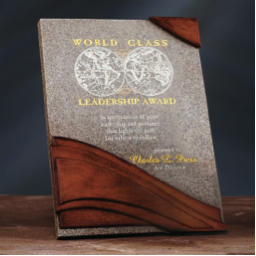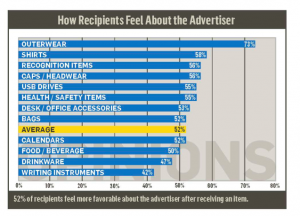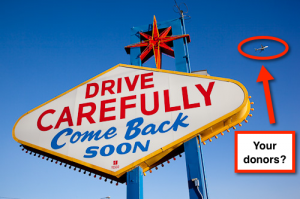Marc A. Pitman's Blog, page 47
March 26, 2013
Shoe Shine guy gives $200,000

This man, Albert Lexie, shines shoes at a hospital in Pittsburgh. Over the last 30 years, he’s given all his tips to the charity care fund at the Children’s Hospital of Pittsburgh.
That’s added up to $200,000 so far!
From a shoe shine guy!
All that glitters…
I love stories like this! It forces us to treat all people well.
In fundraising, it’s so easy to get starstruck by big houses, expensive cars, and flashy jewelry. But all that glitters truly is not gold. Too often, those expensive displays of wealth are really signs of maxed out credit cards and home equity loans.
When we take the time to get to know people, we discover:
A homeless man like Richard Leroy Walters leaving an estate of $4 million to charity.
A $100 annual gift donor Helene Whitlock Alley who left over $7 million to charity.
And a frugal librarian named Jean Preston who amassed an $8 million art collection during her lifetime.
Forced integrity
Intuitively, most of us realize that all humans have worth despite their ability to give a gift to our organization. But with our limited resources, we need to be strategic with whom we communicate with.
These stories remind us to get over our personal bias about wealth. They force us to treat people as possible major gift donors. To treat people with integrity.
Don’t take this wrong: fundraisers need to talk to donor prospects. They can’t be wasting organizational resources providing program assistance or just “friend raising.” But it’s great to remember that some of our best planned giving prospects are more likely to be smaller annual donors and more unassuming people.
And it helps us prioritize visits to people who would impress our board and to people who are longtime friends of the organization but aren’t necessarily well known. People like Richard, Helen, and Jean. And shoe shine guys like Albert.
You can read Albert’s story over on the Chronicle of Philanthropy’s site:
http://philanthropy.com/blogs/philanthropytoday/shoe-shiner-turns-30-years-of-tips-into-200000-in-gifts/63363
(c) The Fundraising Coach, LLC
Get 100 donors in the next 12 weeks? Learn how: 100 Donors in 90 Days!
Other Possibly Related posts:
Capital campaign feasibility studies on a shoe string
Two $4 million surprise gifts
Homeless man leaves $4 million estate






March 18, 2013
[Guest Post] Three Ways Nonprofits Can Use Promotional Products Effectively
I met Elaine Fogel a few years ago when she organized a conference in DC. I’ve been impressed with her commitment to nonprofits and her knowledge of promotional items. (I call it schwag.) So I asked her if she’d write a post on how nonprofits can use them effectively. When she’s not blogging here, she is a professional speaker, writer, marketing consultant and president & CMO of Solutions Marketing & Consulting LLC, a boutique marketing agency that serves nonprofits and smaller businesses. The company also distributes promotional products as part of its product and service mix. You can reach her on Twitter @Elaine_Fogel

Three Ways Nonprofits Can Use Promotional Products Effectively
by Elaine Fogel
Most fundraisers and nonprofit marketers share one major objective – to raise more money for the mission! And, with the thousands of fundraising marketing options available today, where do promotional products fit?
Called by many names: advertising specialties, swag, promotional items, branded goods, chotchkes (Yiddish), giveaways, promotional gifts, advertising gifts, or promotional merchandise, promotional products can help your organization accomplish many of its goals – some related to external audiences, and some internal.
Here are three ways to use promotional products effectively:
Build brand awareness
Giving out appropriate promotional products offers a simple and inexpensive way to leverage your organization’s brand and keep its name and reputation in front of its target markets. When donors and volunteers carry tote bags, wear T-shirts, or use everyday items with your nonprofit’s logo on them, they are sending a message of support for your mission.
As with most consumer products, the more visible your logo and name are in the communities your organization operates, the more people will recognize the brand. The more they recognize it, the greater the odds in responding to “an ask” or event invitation or stimulating a conversation about the mission.
There are many opportunities to distribute promotional products for brand awareness:
Advocacy events
Community fairs/trade shows
Contests prizes and promotions
Fundraising events
Public events
One word of caution here. For larger crowds or quantities, don’t buy cheap items that are likely to break or fall apart quickly. That will do nothing for your brand. Know your audience and what they will use and not throw away. Items like stickers, pins, clips, wallet-sized calendars, pens, pencils, golf tees, and magnets are a few of the less expensive giveaways. If children are part of the audience, there are countless kid-focused items that parents will appreciate.
Demonstrate appreciation and recognition
Nonprofits can never say thank you enough and recognize the people who contribute to their success. Showing regular appreciation to your special donors, volunteers, funders, corporate partners, and employees can help keep them motivated and committed to your cause.
Awards and plaques can be especially valuable to business partners that display them in their offices and to individuals who will place them proudly in their homes. However, if the product is cheaply made or is unattractive, it will defeat the purpose and the recipient will either give it away, toss it, or put it away.
As with many things, price often determines the item’s quality and appeal. There are many stunning products available today that are bound to impress, as well as affordable pieces that are pleasing and well made.
Multi-toned Moonstone finish Stonecast plaque with realistic wood grain finish.
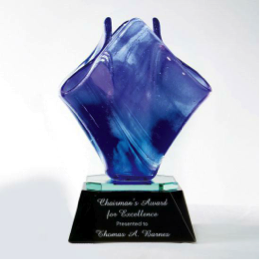
This free-flowing award has cobalt blue-toned veining and rests on an ebony optical glass base with a mirrored reflector. Each piece is hand made and signed by the artist.
Ensure you send appreciation gifts to donors after they’ve made a gift and not before. Some newer research indicates that using promo products as up-front incentives may actually be counterproductive to donor retention.
For major gifts donors, special volunteers, and other worthy recipients, there are many quality products in a range of prices. Use branded items that are useful, represent the brand well, and are priced to suit the specific group.
In the accompanying thank-you note, remind recipients that whenever they wear or use their appreciation gifts, they are helping to advance your organization’s mission. That way, you can reduce any misgivings about the cost.
In addition to appreciation and recognition, there are many similar opportunities to use promotional products:
Holiday gifts
Milestones
Retention
Rewards
Stewardship
Generate additional revenue
Some entrepreneurial nonprofits sell their branded goods online and at events to generate additional revenue as well as build brand awareness. There are companies that can manage online sales and fulfillment on your nonprofit’s behalf if employees cannot. Typical sales products include mugs, T-shirts, hats, drinkware, bags, and office accessories.
There are a few statistics worth noting when deciding on promotional products.
Nearly nine in ten (87%) recipients of promotional merchandise can identify the advertiser on the item.
Over one-half (52%) of the time, ad specialties leave a more favorable impression of the advertiser.
Promotional products deliver the same or a better ROI than other forms of media.
About eight in 10 (81%) of product recipients indicated that an item’s usefulness is the primary reason to keep it.
The products that leave the most positive impression and that recipients keep longer are: outerwear, shirts, recognition items (awards, plaques), caps/headwear, flash drives, health and safety products, desk/office accessories, and bags.
Promotional products give your nonprofit an affordable way to build goodwill, demonstrate appreciation and recognition, make a few bucks, and gain brand name recognition. According to Professor Ian Bruce, founding director of the Centre for Charity Effectiveness at London City University’s Cass Business School, “The name is so important because it is a shorthand for everything you do and stand for.”
©2012 Advertising Specialty Institute®
(c) The Fundraising Coach, LLC
Get 100 donors in the next 12 weeks? Learn how: 100 Donors in 90 Days!
Other Possibly Related posts:
[Guest Post] Special events: Make them worth the effort
Are there creative ways to publicly thank donors?
20% off selected products at the Fundraising Coach Store






March 12, 2013
What if we just called them part of the family?
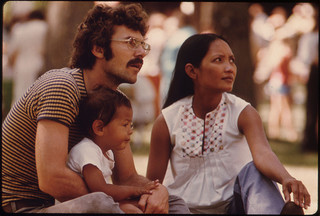 A couple weeks ago, I had the privilege of hosting the Nonprofit Blog Carnival. I asked some of the nonprofit industry’s top bloggers how they kept donors coming back. 16 experts shared their best tips.
A couple weeks ago, I had the privilege of hosting the Nonprofit Blog Carnival. I asked some of the nonprofit industry’s top bloggers how they kept donors coming back. 16 experts shared their best tips.
7 out of 10 don’t come back
One of the shocking statistics is that on average 70% of donors don’t make a second gift to a nonprofit.
7 out of 10.
I then had the opportunity to chat on a Google Hangout with John Haydon about this problem. I mentioned an interview I’d done with Adrian Sargeant for the Donor Retention Project where he talks about the problem of our verbiage around “annual donors.”
What if we just called them part of the family?
John and I wondered what would happen if we stop calling them “annual donors.” Doing that seems to focus on the one gift over the relationship. “Did they give this year?” defaults to “Ok, we don’t have to talk to them for 12 months.”
Would you join us in thinking about donors as parts of the family? That the people who fund the mission are as important as the employees who carry the mission out?
When you do this, you’ll feel much more comfortable inviting them to invest as opportunities arise. Whether or not 12 months has gone by.
How would that transform your fundraising for 2013?
Two tools to help with donor retention
16 experts gave advice on how to keep donors coming back. You can see them all at the Nonprofit Blog Carnival post at:
http://fundraisingcoach.com/2013/02/27/how-to-keep-your-donors-wanting-to-come-back/
The gang that brought you 100 Donors in 90 Days is heading back into the studio with new experts to work on “The Donor Retention Project.” The Donor Retention Project is going to be to donor retention what 100 Donors in 90 Days was to donor acquisition. Revolutionary.
Sign up to learn more at http://DonorRetentionJazz.com/.
(c) The Fundraising Coach, LLC
Get 100 donors in the next 12 weeks? Learn how: 100 Donors in 90 Days!
Other Possibly Related posts:
Merry Christmas from the Pitman Family!
Put together the pieces of the Donor Retention Project in 2013
16 experts tell you how to keep your donors wanting to come back






March 7, 2013
[Question Marc] How do I recruit new board members?
 From time to time, I have a feature I call Question Marc?. [Pun fully intended]
From time to time, I have a feature I call Question Marc?. [Pun fully intended]
A coaching client who is a board member for an arts organization recently sent me this question:
We are trying to quickly build up our board since it is small. I am planning on asking 3 people. I think they would be great board members for various reasons. I want to approach it by emphasizing how fulfilling this opportunity will be for them, based on their backgrounds and interests. Any suggestions?
My Answer
I love board members who are asking how to invite more people they know on to the board!
Here are my suggestions:
Be sure to be able to tell them why you think they’ll be a good fit
What talent or ability do you see in them? Knowing that they are bringing something of value will help them see how they’d fit with the board.
Be honest about the work
Saying “you won’t have to do anything and it’ll be fun” doesn’t respect the person or the board. A person’s time is valuable so they should be doing something of value with their board service. And nonprofits need a board that isn’t filled with dead weight. Better to be upfront with them about the work (time, responsibilities, fundraising goals) than to surprise them after they sign up.
Share your story
Their response to the invitation will probably hang more on your relationship and their schedule than on their connection with the nonprofit. If they say yes, it’s the board’s job to make sure they feel growing allegiance to the nonprofit. But for now, you want to get them to yes. So share with them why you’re invovled:
Why did you join the board?
What do you like even more now that you’re on the board?
What motivates you to stay on the board?
You may not remember all the statistics of the nonprofits financials and growth or the structure of the bylaws, but you will always remember your story. Being authentic with them will be the best way to help them choose to join the board!
What would you add?
That’s my response. What would you add? Tell us in the comments!
(c) The Fundraising Coach, LLC
Get 100 donors in the next 12 weeks? Learn how: 100 Donors in 90 Days!
Other Possibly Related posts:
3 ways to help board members with leaving the board
6 tips to help board members work a room
Are your Board Members hesitant or fearful to make an ask?






March 6, 2013
Check your Google+ page image
Your Google+ page just changed. Google has increased the cover image size to 2120 x 1192, from 940 x 180.
And the profile image is now an ugly circle, not a square.
I’m not a fan of the change. If you have a Google+ page, and you should, check it out to make sure it still reinforces your brand.
For more on Google+, check out Google+ for Nonprofits
(c) The Fundraising Coach, LLC
Get 100 donors in the next 12 weeks? Learn how: 100 Donors in 90 Days!
Other Possibly Related posts:
So you have a Google+ page for your nonprofit, now what?
How to set up multiple admins for your Google+ page
Reality Check






March 5, 2013
New free ebook “npEXPERTS: Online Marketing Insights for Nonprofits”
 I’m honored to be one 20 experts included in the ebook: npEXPERTS: Online Marketing Insights for Nonprofits. In this ebook, we share tips, tricks and stories on “how to use nonprofit marketing to connect with supporters, activate your donor base, and raise money online.”
I’m honored to be one 20 experts included in the ebook: npEXPERTS: Online Marketing Insights for Nonprofits. In this ebook, we share tips, tricks and stories on “how to use nonprofit marketing to connect with supporters, activate your donor base, and raise money online.”
Even better, the ebook is free for the taking. It proved so popular this morning that it crashed the server! But they have that fixed now!
You can get your copy of it at the npEXPERTS page.
Other authors include the likes of Beth Kanter, Farra Trompeter, Roger Craver, Amy Sample Ward, Kivi Leroux Miller, John Haydon, and myself.
Here’s a video explaining more:
Learn more and get the book at the npEXPERTS page.
Chapters include
The chapters in the ebook are:
Foreword by Frank Barry
Social Media
6 Steps to a Well-Measured Social Fundraising Campaign by Beth Kanter
6 Specific Challenges Online Fundraisers Should Consider When Using Facebook by John Haydon
Three Ways to Use Social Media in Your Next Campaign by Amy Sample Ward
Social Media and Its Relationship with Online Fundraising by Carie Lewis
Email Marketing
The Science of Email by Steve MacLaughlin
Speak to the Inner Angel, Not the Inner Bookkeeper by Kivi Leroux Miller
Want to Raise Money Online? Don’t Forget about Email By Farra Trompeter
Nonprofits + Internet = People Inspiring People by Ted Hart, ACFRE
Mobile
Getting Personal with Mobile Optimization by Ben Wong
Mobile Fundraising by Jeff Patrick
Peer-to-Peer Fundraising
Expanding Beyond the Fundraising Event by Robyn Mendez
Think High-Tech / High-Touch to Optimize Peer-to-Peer Fundraising by David Hessekiel
Convert Peer-to-Peer Donors into Recurring Online Donors by Jono Smith
Peer-to-Peer Fundraising IS a Social Medium by Donna Wilkins
Integrated Marketing
Integrated Marketing: Yesterday and Today by Dennis McCarthy
Your Donors Don’t Live Only Online or Only Offline, So Why Do Your Communications? by Marc A. Pitman
Integrated Marketing and Online Fundraising by Roger M. Craver
Online Fundraising by Scott Pearl
Improving Direct Marketing Response with Online Advertising by Richard Becker
(c) The Fundraising Coach, LLC
Get 100 donors in the next 12 weeks? Learn how: 100 Donors in 90 Days!
Other Possibly Related posts:
A Twitter chat for fundraising and marketing for small nonprofits – today!
Free AMA Nonprofit Marketing Conference 2011 registration contest
Seth’s Blog: Flipping the Funnel–new ebook






February 27, 2013
16 experts tell you how to keep your donors wanting to come back
Special thanks to ChepeNicoli on Flickr for permission to edit his terrific image.
Since we celebrate Valentines Day in February, I thought I’d have this edition of the Nonprofit Blog Carnival focus on long-term donor relationships. I like to think of it as showing them “love.”A few weeks ago, I posted this question to nonprofit bloggers: How do you keep your donors wanting to come back?
We got dozens of responses! Here are my favorites.
Everything you need to know about improving your donor retention
The ever brilliant Jeff Brooks showcased his succinct creativity in the post: All the steps to insanely better donor retention.
If you check out only one post on this Nonprofit Blog Carnival roundup, make it this one.
More posts on how keep your donors coming back year after year
On the Care2 blog, Allyson Kapin shared “Strategies to Increase Nonprofit Donor Retention Rates with the very cool infographic from the folks at Bloomerang.
Erik Anderson from TheHealthyNonprofit.com writes about Donor Retention in 2 Easy Steps. They’re at the bottom of the post and they could transform your nonprofit’s fundraising. Seriously.
Joe Garecht of The Fundraising Authority gives some great advice on How to Get Brand New Donors to Give Again.
Ann Green encourages you to Find Ways to Engage with Your Donors and gives about a dozen ways to do so, including some interesting ideas on using email.
On her blog Clarification.com, Claire Axelrad shares 12 Warning Signs that You’re Betraying Your Donors and suggests 8 ways to show donors love with social media.
Knowing what not to do is as important as knowing what to do. Joanne Fritz, Guide of the Nonprofit section of About.com, shares 6 Ways to Lose Your First Time Donors. Great suggestions backed up by Adrian Sargeant’s research.
Lori Jacobwith did her own roundup sharing 5 Resources to Help You With Donor Engagement from her blog.
Brian Mittendorf, Associate Professor of Accounting at Ohio State University’s Fisher College of Business, shared a post on his blog “Counting on Charity” about Cultivating Repeat Donors with Financial Transparency, including a great example of how to make pie charts more transparent.
Julia McDowell of Williams Whittle shares some creative uses of video in her post PSA Spotlight: 3 Great Examples of How Nonprofits Have Used Video To Say Thank You.
Farra Trompeter from Big Duck suggests some areas you should look at in her post 5 Approaches to Keep Your Donors Engaged and links to another post on 11 ways to tell if your donor loves you!
Craig Linton of The Fundraising Detective shares some real world results from a couple direct mail fundraising appeals he conducted in Donor retention: a tale of two cold mailings.
Lori Halley of Wild Apricot takes a new look on donor retention in her post Tips for a Long and Happy Donor Marriage, including a relationship quiz.
Pamela Grow pointed me to a blog post on 101fundraising.org by Francesco Ambrogetti, the Fundraising Advisor for UNAIDS in Geneva called The Big Chill: can we cure donor’s emotional breakdown?. In this post, he draws on lessons from Zappos to George Bailey!
Gail Perry post 11 Ways to Make Sure Your Donors Keep Giving will have you thinking of ways you can adapt them to your nonprofit.
Shanon Doolittle shares 6 actions to take to help event donors give again in her post Have You Seen Me?
Speaking of Gail Perry and Shanon Doolittle, they are two of the experts I got to interview for an upcoming tool Pamela Grow and I are working on called The Donor Retention Project. You can learn more on my post: Put together the pieces of the Donor Retention Project in 2013.
Share this post with other nonprofit leaders
2013 looks to be a very challenging fundraising year. With nonprofits losing an average of 60%-70% of donors after the first gift, retaining them is much less expensive way to increase nonprofit revenues than finding new donors.
So share this post with any nonprofit leaders or board members you know. It is packed with cost effective ways to raise money.
And do yourself a favor and check out Jeff Brooks’ All the steps to insanely better donor retention.
The March Carnival is hosted by Rad Campaign. Rad wants your ideas about multi-channel strategy and campaigns for Social Change Anytime Anywhere. Get the details here -
http://www.radcampaign.com/blog/how-do-you-use-multichannel-strategies-create-social-change-anytime-everywhere
(c) The Fundraising Coach, LLC
Get 100 donors in the next 12 weeks? Learn how: 100 Donors in 90 Days!
Other Possibly Related posts:
Nonprofit Blog Carnival: How do you keep your donors wanting to come back?
Free nonprofit tools from 10 different experts!
More on what really annoys your donors






February 26, 2013
Donor’s don’t need another best friend!
About a week ago, I was able to do a Twitter chat on “loving your donors” and showing them appreciation. You can read a transcript here: http://storify.com/audiencedevspec/auddev-chat-2-14-noon-et-loving-your-donors
Do you have to answer donors’ questions?
One of the interesting turns in the Twitter chat was around specific ways to best show appreciation for donors. I unexpectedly found my hackles raised when someone tweeted “answer their questions.”
I think I got a bit riled up because I’ve lost gifts trying to answer questions. I forgot that my job wasn’t to answer their questions about my nonprofit. My job was to raise money for my organization. Not to be the “answer man.”
The problem of losing focus
When we get our eyes off the goal, we lose focus. If a donor keeps coming up with questions or objections, you can easily say, “If I can answer this to your satisfaction, is it the only thing standing in between you and making a gift?”
I’ve done it and it works. It helps donors refocus on the difference they can make. And it gets you off the treadmill of never-ending-questions.
Donors want to be good stewards
I’ve seen development professionals squander meager nonprofit resources by confusing donor retention with being a concierge. They get embarrassed about “fundraising” and instead focus on “friendraising.”
As the Twitter conversation went on, I tweeted: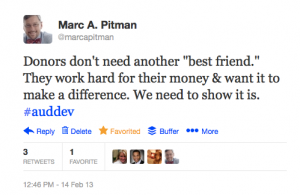 Could you use 100 new donors in the next 90 days?
Could you use 100 new donors in the next 90 days?






February 22, 2013
[Guest Post] Special events: Make them worth the effort
From time-to-time, I get to introduce you to a rock star in my universe, a colleague I trust implicitly. Today I’m thrilled to introduce you to Clover Frederick, a fundraising and marketing expert from Lincoln, Nebraska. I love her idea of fundraising events being a “22-hour piñata”! You can follow her on twitter @cloverfrederick.
Special events: Make them worth the effort
 by Clover Frederick: Fundraiser & Marketer on a Mission
by Clover Frederick: Fundraiser & Marketer on a Mission
www.CloverFrederick.com
I read an article recently about a 22-hour piñata. The author’s daughter had an assignment to build a piñata. Ultimately, it took her 22 hours – much longer than expected and the project didn’t really teach her anything useful about Spanish.
The author encouraged readers to consider what “ridiculous project(s)” we take on that do not “merit this much energy.”
In the nonprofit world, fundraising events can easily become our 22-hour piñata. Whether it is an event that has been a tradition for years with devoted volunteer leaders or a fresh, new event meant to engage the public, we often end up spending so much time on the events that the buzz, engagement and even funds, aren’t enough to justify it all.
Don’t get me wrong. I love fundraising events. I think they are an important piece of the marketing/fundraising mix. But I have fellow fundraising consultants that refuse to work on them because they so often turn into a waste of precious time.
So how do you avoid taking on a 22-hour piñata project? Ask yourself a few questions about your event.
Is this a PTA-level event?
No offense to PTA’s but their signature fundraisers require hundreds of foot soldier volunteers (students and parents). If your event idea takes more people than you can reasonably pull together (like selling items door-to-door or a bake sale of homemade goods), it is time to consider other ideas. These fundraisers depend on having a huge body of buyers and sellers so to succeed, your organization has to have a built-in audience (like a rummage sale for a church youth group).
Will this event expose new people to our organization?
Even if there is a lot of work to be done, sometimes events are worth the work if they expose the public to your organization. In my experience, the event has to be so much fun or so intriguing that the public will attend whether they know your organization or not. The latest trend that seems to be working is the fun run/walk. People on an exercise kick will come run or walk no matter the cause and sponsors are willing to be a part of that. (It is important to note that the majority of funds raised will be on sponsorships, not entry fees.) Other fundraisers that host celebrities, concerts or comics will often bring in a new crowd and get media buzz.
Can this event be SMALL but mighty?
Some events are designed to bring in great funds without a ton of expenses. One example is an event I’ve chaired that raised funds for a local breastfeeding center. We knew that this wouldn’t be a cause that the general public might support so we designed one that young parents would enjoy. The cocktail party and dessert tasting (called “Milk & Cookies) had less than 100 couples but expenses were low (donated food, drinks and location) so the profit outweighed the time spent. And the event was so intimate and lovely that the director described it as “magical.”
What extra ways of raising funds can we add to an existing event?
Silent auctions are a lot of work and can really be draining to the sponsors you have to approach year after year. Consider a high dollar raffle of 3 to 5 big items instead. Believe it or not, you can make more money this way since nearly everyone will buy at least one ticket. Silent auctions are drawing lower and lower bids lately and people are more like to look for a “deal” than run up the bid for a good cause. Participants are often willing to spending $20 on a chance to win rather than hundreds of dollars to be sure to win.
Hopefully these suggestions will help you determine whether that “great idea” is truly a great fundraiser or if it will turn into a 22-hour piñata.
(c) The Fundraising Coach, LLC
Get 100 donors in the next 12 weeks? Learn how: 100 Donors in 90 Days!
Other Possibly Related posts:
3 reasons social media is worth the effort for local nonprofits
More on non-events
Tips on Fundraising Events






February 13, 2013
Free Valentine’s Day Bow Tie Card
Whether for you or that special Valentine in your life, get them a free bow tie card this Valentine’s Day!
(c) The Fundraising Coach, LLC
Get 100 donors in the next 12 weeks? Learn how: 100 Donors in 90 Days!
Other Possibly Related posts:
Free seminar and win a free coaching session!
Get a free month of 501 Mission Place!
Why it’s time for YOU to say good-bye to free WiFi







